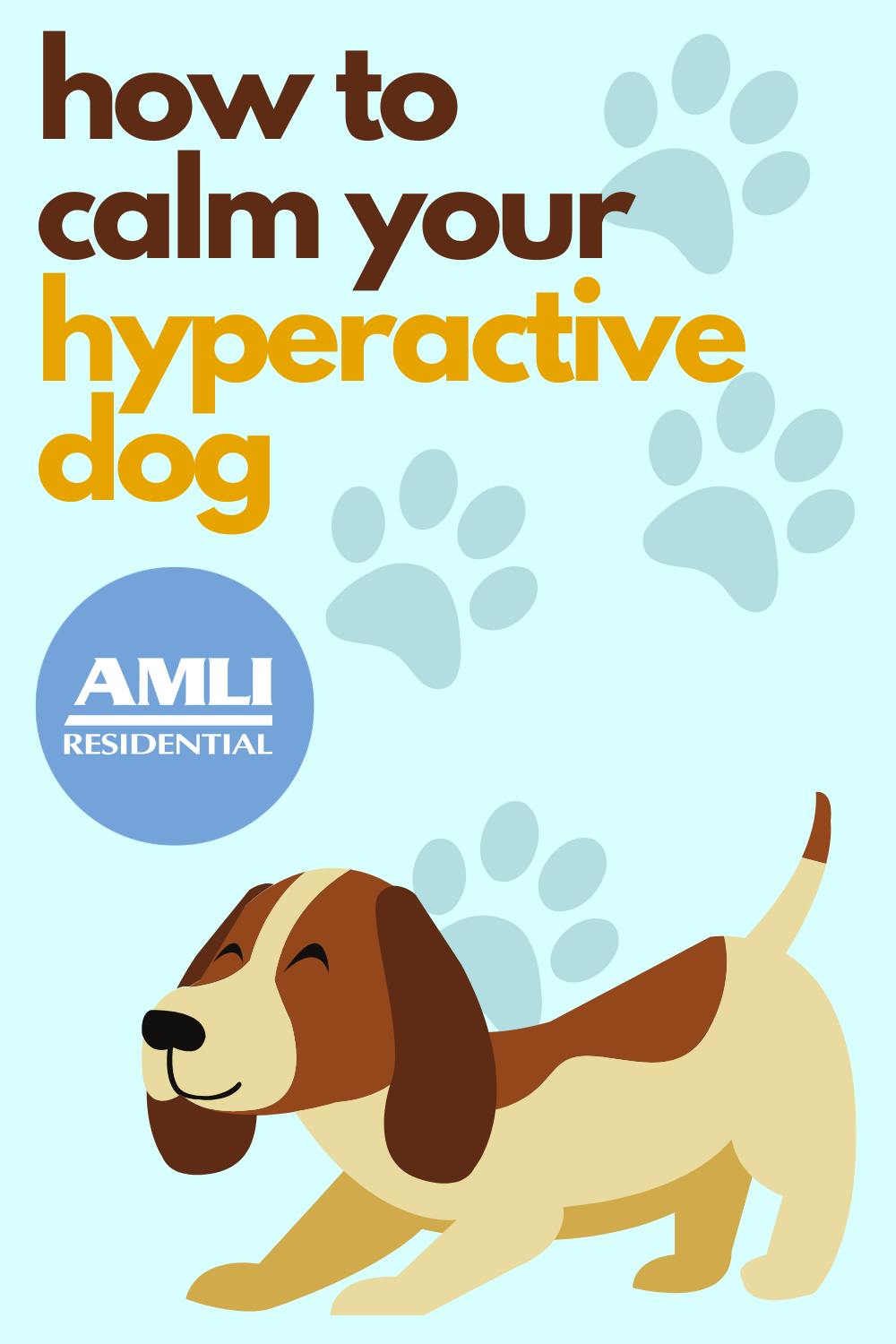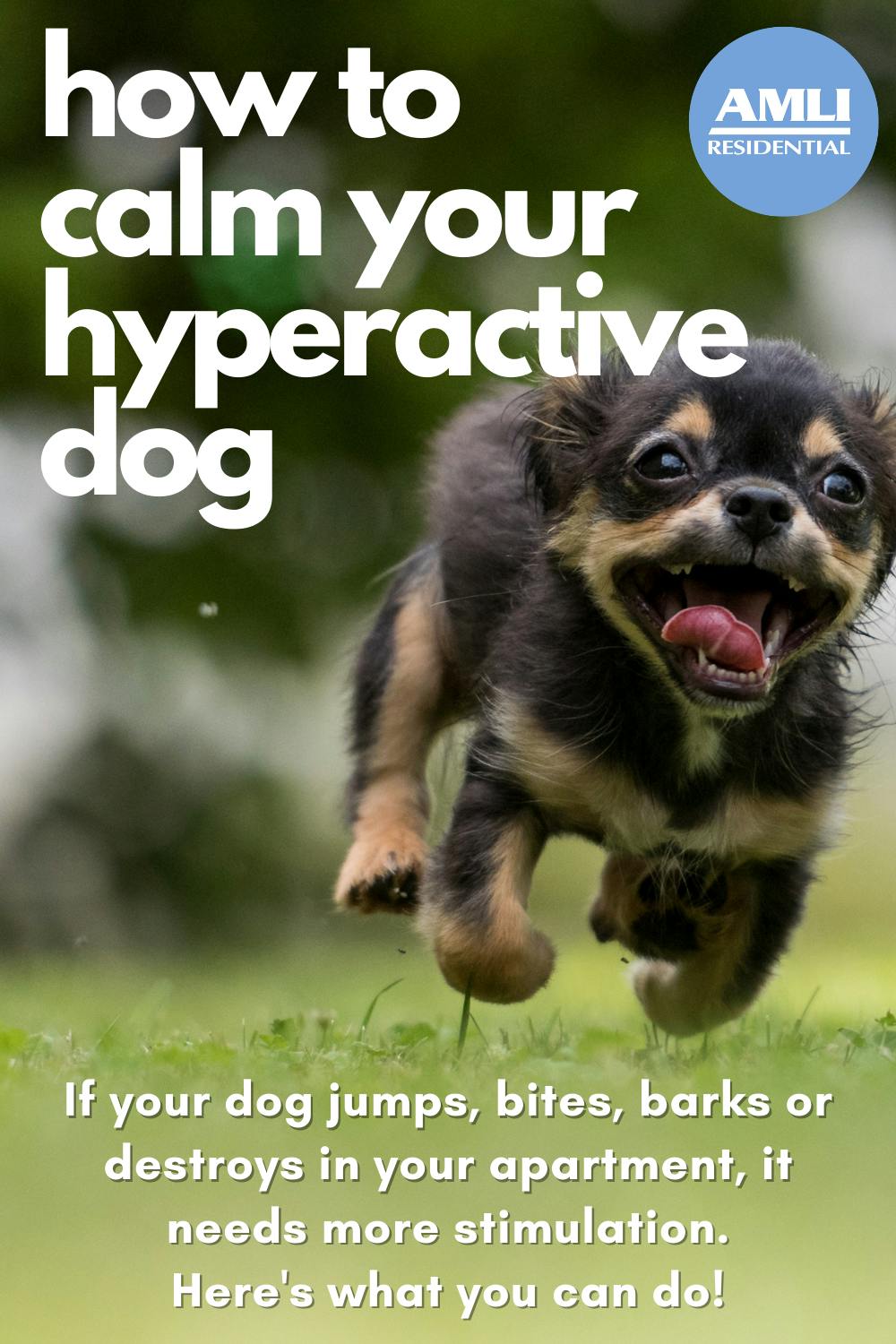Now that cooler weather is on the rise, it’s understandable that most of us will be spending a little more time indoors. And although that may seem heavenly to many of us hibernating introverts, being cooped up in an apartment for days on end can be anything but enjoyable for the hyperactive dogs we live with.
Just think, if you were confined to a small space with few distractions and no social interactions, you would start going a little crazy, right? It’s totally understandable! We all felt the cabin fever when the pandemic first hit, so imagine what it must be like for a dog to be stuck indoors for months.
If you have hyperactive dogs that are starting to drive you a little crazy, learning how to entertain and calm the hyperactivity is extremely important, especially as colder weather approaches and we spend less time outdoors. Being intentional with how you exercise your hyperactive dog’s brain and body can drastically improve your pup’s mental and physical well being. Plus, you won’t have to deal with a hyperactive dog, so it’s really a win-win!

What is hyperactivity?
While we often use the term hyperactive to denote dogs with too much energy, true hyperactivity is a clinical diagnosis that is usually rare in pets. Energetic dogs that have no physiological reason to be hyperactive (tumors, pheromones, allergies, etc.) are rather energetic because of behavior and lifestyle, both of which can usually be managed with time and training. These dogs are referred to as hyperkinetic rather than hyperactive.
Hyperkinetic is a term that’s used regularly when describing pets who are overly energetic and react strongly to stimuli, especially if it’s new and exciting. These dogs may have a hard time settling down at night, might bark and jump excessively and may be prone to shredding up your furniture. If you live in a small apartment, then this behavior could pose some serious issues.
According to the American Kennel Club, behavior in excessively energetic dogs can be attributed to a few different factors: breed, lifestyle and diet. Just as human children need to have the proper stimuli to develop strong physical and mental development, dogs also need plenty of the right kind of lifestyles in order to nourish a healthy body and a healthy mind.
How to calm an excessively energetic dog
Mental stimulation
The number-one reason that your dog is overflowing with excessive energy is that it doesn’t have enough mental stimulation. Dogs are smart and intelligent creatures, and by giving them mental exercises, you are tiring them out in a totally different way than exercise does.
Have you ever spent a full day at work and have left just utterly exhausted? Mental exercise can affect our physical lives greatly, and it does the same thing to dogs!
You can mentally exercise your dog out in several different ways:
- Obedience training
- Food puzzles
- Walking activities (games, training, obstacles, hide & seek)
- Games
Mental stimulation is so incredibly important for dogs of all ages and breeds. Consult your veterinarian or behavior specialist to find out what you can incorporate into your dog’s life to benefit both mental and physical health!
Exercise
If your dog is a husky with a natural athletic disposition that’s built into its very DNA, a 20-minute walk once a day is just not going to cut it. Even smaller and less-athletic dog breeds often need far more exercise than what they’re getting, and if there’s no outlet for all their energy, then that energy is going to manifest itself elsewhere. For example: they might jump, nip, dig or speed around the house.
Dogs need real exercise to truly use up all of the extra energy that manifests in “bad” behaviors. Swimming is a great way to tire out a dog, as is a good long run. Play fetch and make your dog run and sprint until they are tired, and you’re sure to have a much calmer dog when you get back home!
Check out this great article on how you can property exercise your dog!
Diet
Have you noticed that you feel more emotionally and physically balanced when you eat healthier food? That’s because good food has nutrients that your body and mind need to function at a higher level! And, just as this works with humans, this concept also applies to dogs.
If your dog’s diet consists of high-fat and high-protein foods, then that could be contributing to your dog’s unbalanced energy levels.
We’ve already spent some time finding you some healthy homemade dog treats, but always consult a veterinary nutritionist before making major changes to your dog’s diet.
Training
Training doesn’t always have to be for avoiding bad behaviors. Training can teach good behaviors that both you and your dog can benefit from, but you have to commit to it fully or else it won’t work.
Contrary to what we often think, dogs enjoy the process of training! They enjoy the mental stimulation and the positive reinforcement that come along with it, and they are quick to figure out what actions will result in what rewards. This is important to keep in mind, however, because if you aren’t careful with what actions you do or don’t reward, your dog might learn the wrong thing.
If you play and snuggle with your dog after they start jumping up on you, then they're going to learn that jumping equals attention and will do it to anyone who walks through the door. If your dog barks at the toy shelf until you give up and throw them a ball, they're learning that barking equals playing. However, if you reward your dog when they sit quietly in his dog bed when a guest rings the doorbell, then they will learn that calmness equals treats.
Train your dog to do behaviors that you want them to follow, and they will love being rewarded for it. It’s simple, but not always easy, so don’t hesitate to take a few obedience classes to get the process started!
We love having pets at our AMLI communities, and we want you to be happy and fulfilled pet owners! If you feel that your dog is too energetic or too excitable and are at your wits’ end, try these tips and see how life changes!
Good luck!
Pin it!

Featured photo courtesy Pixabay/825545


 View All Posts by Colleen Ford
View All Posts by Colleen Ford